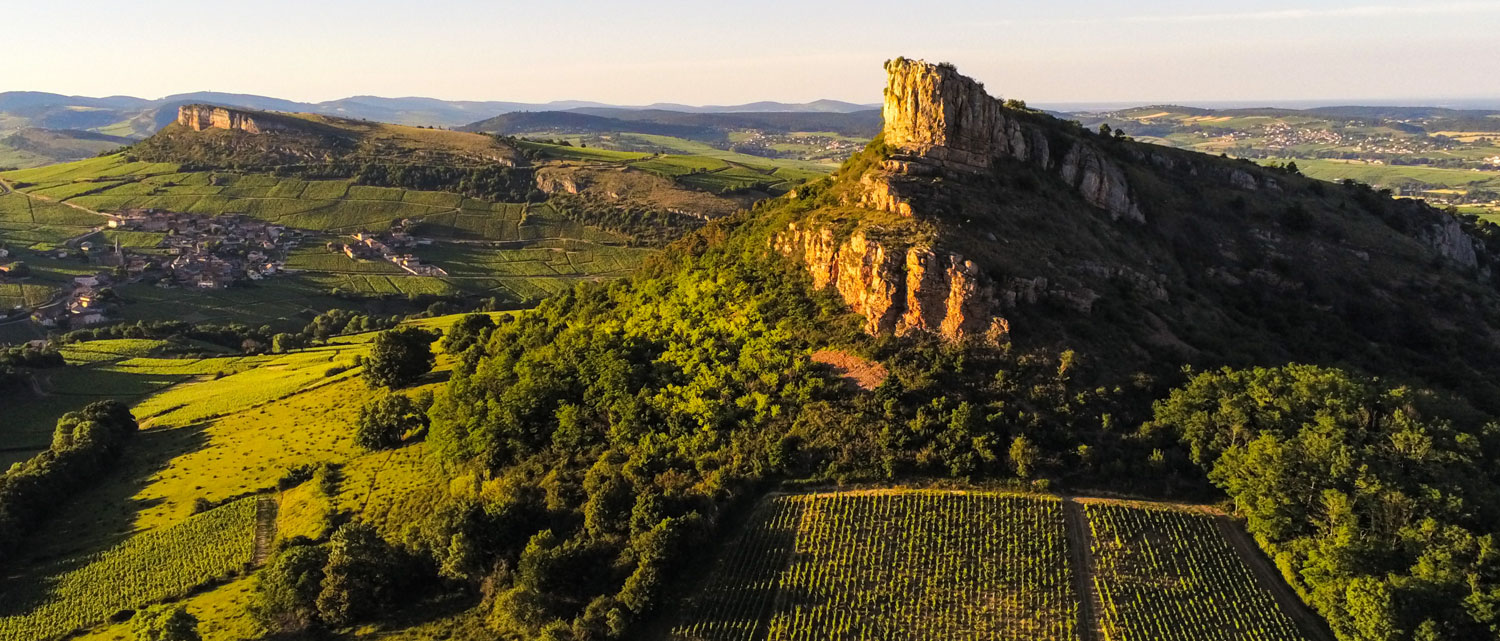
The vineyards of the Mâconnais begin to the south of Chalon-sur-Saône. The eastern flank of the region is the River Saône itself as it meanders south through Tournus to Mâcon while the western flank flings out in a wide arc that takes in Sercy, touches historic Cluny and then meets in the middle beneath Pouilly and Fuissé, just to the north of St. Amour.
It is a large area with over 6000 ha under vine. The most basic level ‘Mâcon’ exists in both colours and represents less than 10% of the vineyard while the white-only appellation of Mâcon-villages accounts for almost one third of the region’s vines. Individual named villages, mostly with the word ‘Mâcon’ in front of them, such as Mâcon-Verzé, make up another quarter. The remaining third are those without the word ‘Mâcon’: St Véran, the three Pouillys (Loché, Vinzelles and Fuissé NOT Fumé!) and Viré-Clessé. White grapes dominate: reds account for less than 5% of the total product of the region.
There are very distinct differences, as one would expect in such a large area, from the flatter land towards the river in the east to some remarkable hills and hidden valleys in the centre, south and west. Vineyards can be found at a mixture of altitudes and orientations and that’s before we even start to consider the complex mosaic of geology beneath the surface. In short, there is a lot to explore- certainly enough for even the nerdiest oenophile.
Today’s consumer is increasingly becoming more confident and interested in those differences, rather than being content with a safe, predictable but anonymous array of regional blends. In turn, this curiosity for individuality encourages producers to increasingly look at the potential for single-site expressions. The recent arrival of the classification of the vineyards of Pouilly-Fuissé further advances this project.
This dynamism is to be thoroughly welcomed. For much of the last hundred years, the Mâconnais has been rather disregarded, with an image of simple, cheap abundance rather than anything to be desired.
The parallels with neighbouring Beaujolais are hard to ignore. However, while the renaissance of the latter came from within, in the Mâconnais there was undeniable help from outside. The arrival of pivotal names in the white wine firmament such as Dominique Lafon and Anne-Claude Leflaive caused a stir: surely if the great and the good of Meursault and Puligny were interested, it must be worth another look?
Of course, there were many brilliant, honest local vignerons who had continued to work hard in full commitment to their heritage. Rather than feel threatened, however, they have worked with the arriving superstars, one learning from the other. Today, the Mâconnais is one of the most energetic viticultural areas of Burgundy. Land is still available in a way that encourages young talent that is shut out of the Côte d’Or. Prices for both land and for the best wines have risen too: a deserved reflection of the increased quality but also an encouragement for the vignerons to continue to do better. However, we are still at a level that keeps them off the radar of the billionaires queuing up in Beaune, whether there to buy land, bottles or both.
The depth of history of the area shows that it is no poor relation. Access to the Saône and the position between Paris and Lyon have long made the region an important, strategic trading route. The abbey of Cluny, founded in 910 AD, is one of the most historic and historically powerful in France. The gentle, rolling landscape is punctuated by dramatic features, notably the rocks of Solutré and Vergisson and the evidence of pre-historic life around them makes this a particularly draw for archaeologists and anthropologists.
In short, the Mâconnais is finally having a moment. Alongside the heritage and traditions, we have found an openness of spirit and a dedication to quality and authenticity which chimes exactly with what we look for. Time to jump in with both feet.